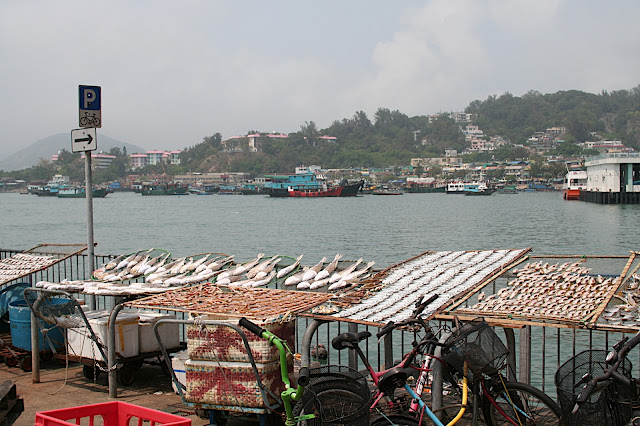
Cheung Chau is one of my favorite places in all of Hong Kong. It's one of the two most popular small island getaways that local Hongkies, expats, and tourists alike love to go to, the other island being Lamma Island. But to me, Cheung Chau is far more interesting because beneath the slower-paced village-like persona of this fishing village lies a rich local culture and
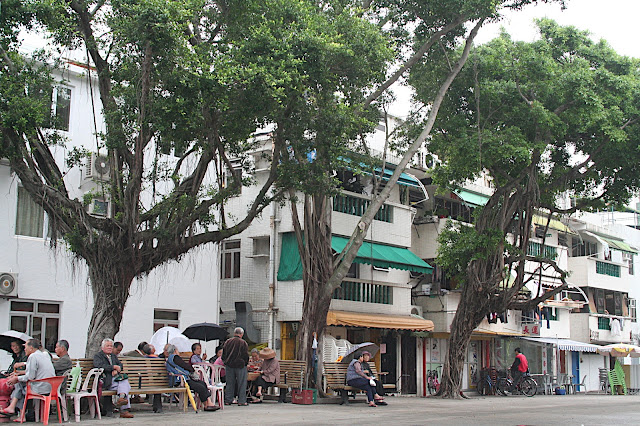
history, with fascinating lore and legends of pirates, suicides, a Qing dynasty broad sword, a 3000 years old rock carving, and other little things to satiate those with quirky tastes for stories and historical anecdotes. Plus, the beaches aren't bad, the hiking is pleasant and relaxing against a backdrop of rolling green hills and the soothing ocean waves, the much-adored banyan trees are inspiring, and of course the food is great. Without further ado, on to the historical gems of Cheung Chau!
Historical Sites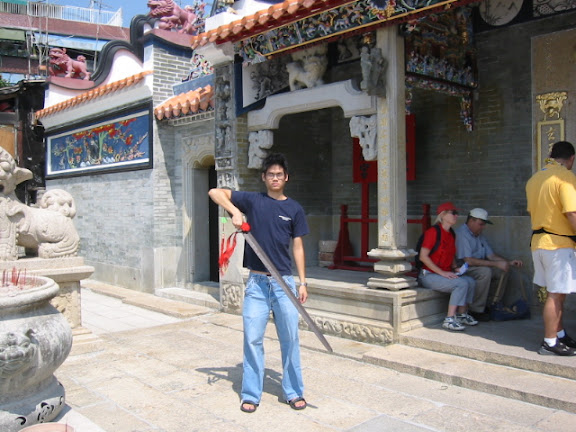

- myself with broad sword at Pak Tai 北帝 temple (left)
- a 3000 years old rock carving (right)
Pak Tai 北帝 temple was constructed in 1783, and is most known for the fact that the famous
Bun Festival is held annually in front of it. What few people know is that contained in this temple is a sword dating back to dynastic China (Qing dynasty perhaps), which is not publicly on display. Luckily, I gained access through a connection I had with my Cantonese teacher. As for the 3000 years old rock carving, few people know or care about it, which is understandable since it really is unimpressive. What interests me about it though is the fact that it was ludicrously cited by Gavin Menzies, author of
1421: The Year China Discovered The World, who claimed that this was a record commemorating the circumnavigation of the globe by
admiral Zheng He 鄭和 and his fleet. After reading his interesting book, I came here in excitement, only to find this weathered artistic inscription.
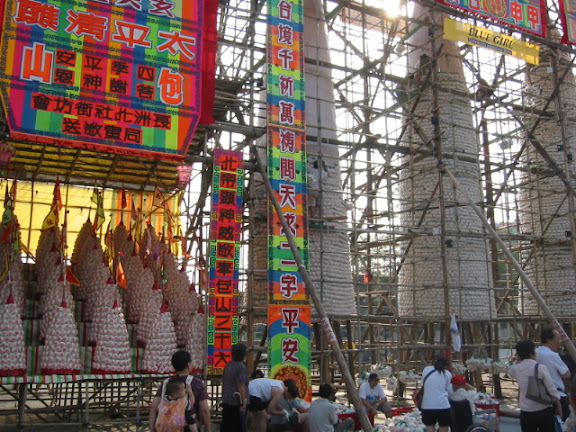
If you're not as interested in the obscure historical bits like I am, then try to come on the 8th day of the 4th month of the lunar calendar for the
Bun Festival, which is brimming with rural Chinese culture and tradition. Here you see them setting up for a tradition whereby contestants climb the mountain of buns to see who can snatch one from the highest point. They've only restarted this annual tradition lately because of a serious accident some decades ago, so take advantage of this and check it out!
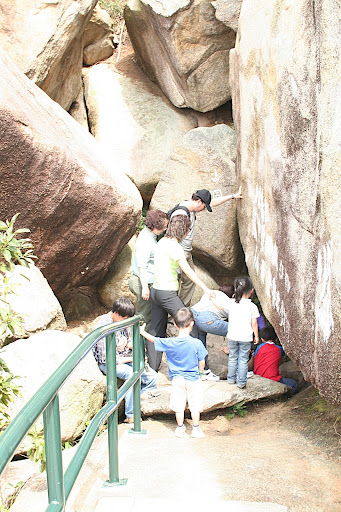
The second popular historical attraction is the cave where 19th century pirate
Cheung Po Tsai 張保仔 kept his treasure. Although I didn't find any remaining treasure in this somewhat deep and long cave that exits at a different point from its entrance, this doesn't mean that you might not find something! Just remember to bring a flashlight if you don't want to get stuck using the LED of your cell phone, or the flash from your camera.
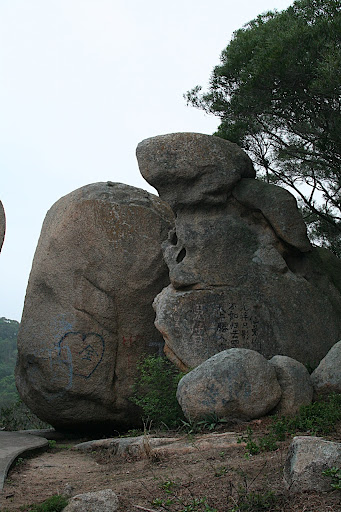 Natural Sites
Natural SitesThis rock which strikingly resembles a rabbit and some easter eggs reminds me of some certain emails I've gotten from evangelists. Here's another
funky-looking rock that resembles another animal.

In fact, the whole island has some pretty interesting rock formations. But if you're not one with a wild imagination, hikes to hill-top peaks provide some nice rewarding views, like the one in the photo below.
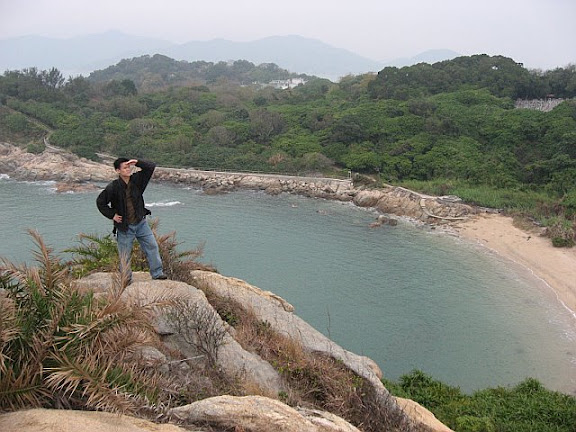
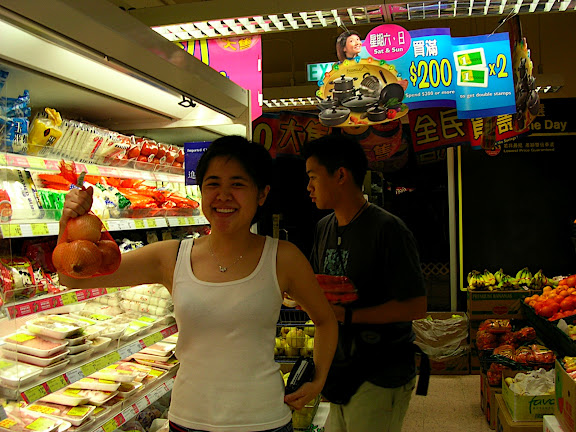
And lastly about Cheung Chau, a good deal of Hongkies like to get away from the hustle and bustle by coming here, sometimes staying a night and making a weekend trip out of it. One thing you could do is a Hong Kong style barbecue, which is like campfire style except you're going all out, because the smores are just the finale! In this picture, we're at the grocery market to buy the soon-to-be-bbq'd food.

HK style BBQ isn't something you can only do at Cheung Chau, there are pits set up pervasively throughout Hong Kong. But it's really nice if you can do it at Cheung Chau, with its relaxing quaint backdrop.
To get to Cheung Chau, take a ferry from Central. The fast ferry is air-conditioned and will get you there in half an hour. The slow ferry will get you there in about an hour. I actually prefer the slow ferry because the wind refreshingly reminds me that I'm at sea, providing a more naturally pleasant journey than the fast ferry. Here's the
schedule.
To learn more about Cheung Chau:
http://en.wikipedia.org/wiki/Cheung_Chau



No comments:
Post a Comment